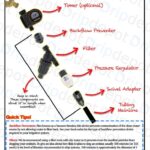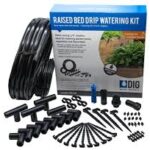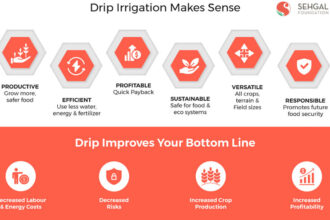Choosing the right irrigation system is crucial for maintaining a healthy garden while optimizing water use. This guide compares drip irrigation and sprinkler systems to help you decide which is better suited for your garden.
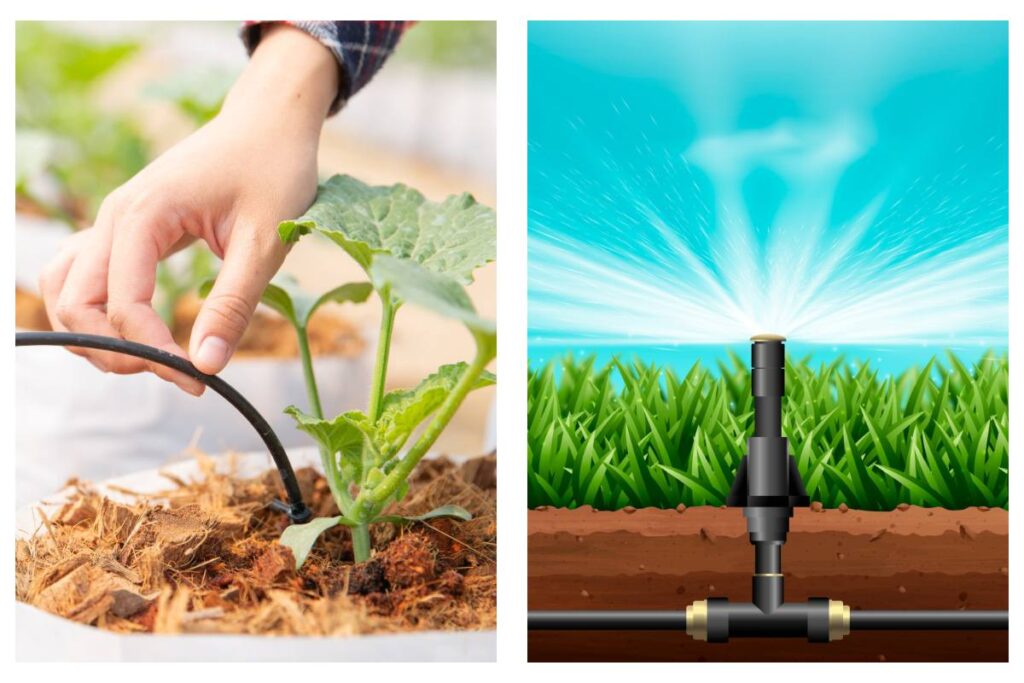
1. Overview of Drip Irrigation
Drip irrigation delivers water directly to the base of plants through a network of tubes, emitters, and valves.
Advantages:
- Water Efficiency: Reduces water waste by targeting plant roots.
- Minimized Evaporation: Water is delivered close to the soil, limiting evaporation.
- Flexibility: Suitable for various plant types and layouts.
- Improved Plant Health: Reduces the risk of fungal diseases by keeping foliage dry.
Disadvantages:
- Initial Cost: Higher upfront investment in components.
- Maintenance: Emitters may clog and require regular cleaning.
- Setup Time: Requires careful planning and installation.
2. Overview of Sprinkler Systems
Sprinkler systems spray water over a wide area, mimicking rainfall.
Advantages:
- Ease of Use: Simple to operate with minimal setup.
- Coverage: Ideal for large lawns and uniform watering.
- Cost-Effective: Generally cheaper upfront compared to drip systems.
Disadvantages:
- Water Waste: Susceptible to evaporation and runoff.
- Uneven Watering: Wind can disrupt water distribution.
- Disease Risk: Wet foliage increases the risk of fungal infections.
3. Key Comparisons
| Feature | Drip Irrigation | Sprinkler Systems |
|---|---|---|
| Water Efficiency | High: Targets roots directly. | Moderate: Higher evaporation. |
| Cost | Higher initial cost. | Lower initial cost. |
| Maintenance | Requires regular emitter checks. | Minimal, occasional adjustments. |
| Coverage | Best for gardens, flower beds. | Best for lawns and large areas. |
| Installation | Time-consuming and detailed. | Quick and simple. |
| Suitability | Ideal for diverse plant needs. | Ideal for uniform areas. |
4. Factors to Consider
- Garden Size: Drip systems are best for small to medium gardens; sprinklers excel in large areas.
- Plant Types: Choose drip systems for mixed plantings and sprinklers for turf grass.
- Water Availability: Opt for drip systems in water-scarce regions.
- Budget: Sprinklers are more affordable upfront, while drip systems save money long-term.
- Climate: Drip systems work well in arid areas; sprinklers are better in humid climates.
5. User Feedback
Emily, Urban Gardener: “I love my drip system. It’s efficient and keeps my water bill low.”
John, Lawn Enthusiast: “Sprinklers are my go-to for my large yard. They’re easy to set up and maintain.”
Sophia, Hobby Farmer: “Using both systems in different areas has been the perfect solution for me.”
6. Environmental Impact
- Drip Irrigation: Conserves water, reduces runoff, and minimizes soil erosion.
- Sprinkler Systems: May contribute to water waste and runoff if not managed properly.
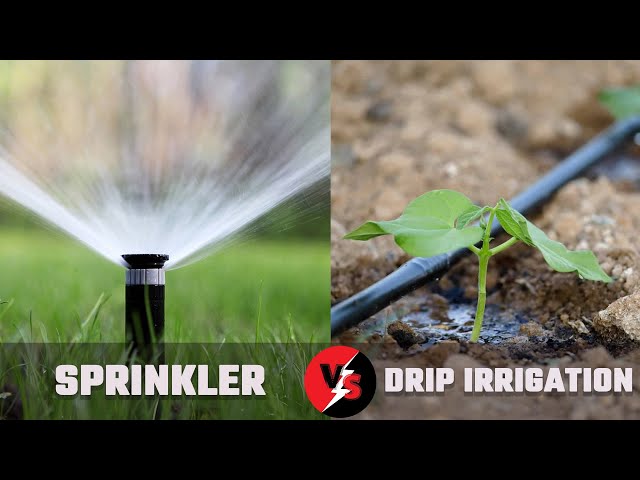
7. Making the Right Choice
| Scenario | Recommended System |
| Mixed plants in beds | Drip Irrigation |
| Large grassy lawn | Sprinkler System |
| Water-scarce environment | Drip Irrigation |
| Quick, low-cost installation | Sprinkler System |
| Automated, precise watering | Drip Irrigation |
8. Pro Tips
- Combine both systems for tailored irrigation.
- Use timers to automate watering schedules.
- Regularly inspect and maintain your chosen system.
- Consider local climate and soil conditions when deciding.
Both drip irrigation and sprinkler systems have their strengths and limitations. By understanding their features and aligning them with your garden’s needs, you can make an informed choice to ensure a lush, healthy garden.

